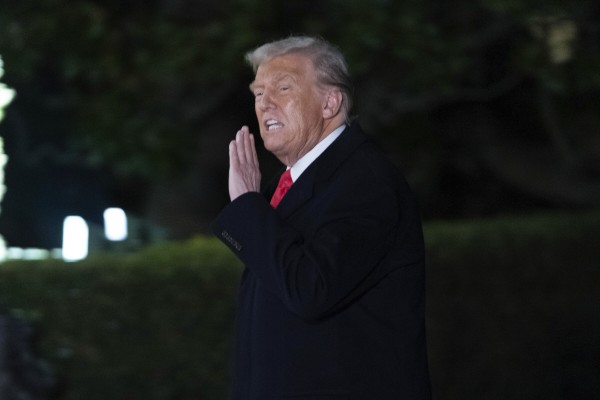WASHINGTON (AP) — President Donald Trump plans to on Monday formally announce 25% tariffs on steel and aluminum imports as part of an aggressive effort to remake the existing terms of world trade that so far has compounded economic uncertainty.
Trump also intends this week to reset U.S. taxes on all imports to match the same levels charged by other countries, all of which comes on top of the 10% tariffs he already put on China, China's retaliatory tariffs that started Monday and the U.S. tariffs planned for Canada and Mexico that have been suspended until March 1.
All of this carries inflation risks at a moment when voters are already weary of high prices and fearful that price increases will eclipse any income gains. Trump maintains that the tariffs will level the playing field in international trade and make U.S. factories more competitive, such that any pain felt by consumers and businesses would eventually be worthwhile.
“'Fairness' is in the eye of the beholder, but the more fundamental question is whether the U.S. actually benefits from such new tariffs,” Benn Steil, director of international economics at the Council on Foreign Relations, a New York-based nonpartisan think tank, said in an email. “The costs to the U.S. will include higher prices to U.S. consumers, retaliatory tariffs abroad, and the loss of U.S. jobs and competitiveness in firms hit by higher input costs.”
Steil noted that other countries are already adopting Trump's approach from his first term as the president imposes tariffs on the premise that the imports create national security risks. That's because national security-related tariffs are legally unchallengeable at the World Trade Organization, meaning that so far Trump's approach has encouraged other countries to increase trade barriers.
“Not surprisingly, everything from ‘door frames’ to ‘alcoholic beverages’ have of late been subject to new import barriers in the developing world on the grounds of national security,” Steil said.
The White House has yet to fully counter economic analyses showing that tariffs would hurt growth and intensify inflation, only saying that such analyses are incomplete without including the full extent of Trump's planned income tax cuts and regulatory curbs. But Trump has yet to propose a budget plan that would flesh out his policies so that economists can judge them.
Consumers already appear to be anticipating that inflation will become a bigger problem. On Friday, the preliminary February results from the University of Michigan Survey of Consumers found that year-ahead inflation expectations jumped to 4.3% from 3.3% a month prior.
The government inflation report scheduled to be released on Wednesday is expected by economists to show consumer prices rising at 2.8%, which would suggest that the public sees tariffs as a major risk to their financial wellbeing.
The stock prices of steel companies climbed sharply on Monday as investors assumed the tariffs would increase their profits. Cleveland-Cliffs, which wants to buy Pittsburgh’s U.S. Steel, rose 13% in morning trading. U.S. Steel climbed 4%. Nucor increased almost 6%, and Steel Dynamics rose about 5%.
But companies that rely on steel and aluminum saw their share prices decrease, since tariffs mean that the cost of their raw materials could increase. For example, shares in automaker General Motors sold off, which could ultimately signal trouble for a manufacturing sector that Trump has promised to revive.
“We have far more steel and aluminum-consuming businesses, think construction, machinery and equipment manufacturing, auto manufacturing, than we do steel and aluminum producers, so the advantage created for the producers comes at a much greater cost to downstream users,” said Erica York, vice president of federal tax policy at the right-leaning Tax Foundation.
Still, it's hard to know exactly what Trump would do with his tariff plans. The U.S. president told reporters aboard Air Force One on Sunday as they went to the Super Bowl: “Any steel coming into the United States is going to have a 25% tariff."
From the perspective of trade experts, the blunt remark was unclear. Would the tariffs be in addition to the 25% tariffs that he placed on the metals in 2018? Would they also be on top of the 25% tariffs that then-President Joe Biden put on Chinese steel and aluminum in 2024? Or, would the 25% tariffs simply be a universal tax going forward as exceptions and workarounds have meant that much of the steel being imported by the United States avoids existing tariffs?
Those were the kinds of unknowns that even supporters of tariffs were trying to understand on Monday morning, said Scott Paul, president of the Alliance of American Manufacturing, a partnership between manufacturers and the United Steelworkers union.
Paul sees tariffs as likely being helpful for domestic steel and aluminum manufacturing, but he added: “The details are going to matter a lot.”

http://accesswdun.com/article/2025/2/1285745
